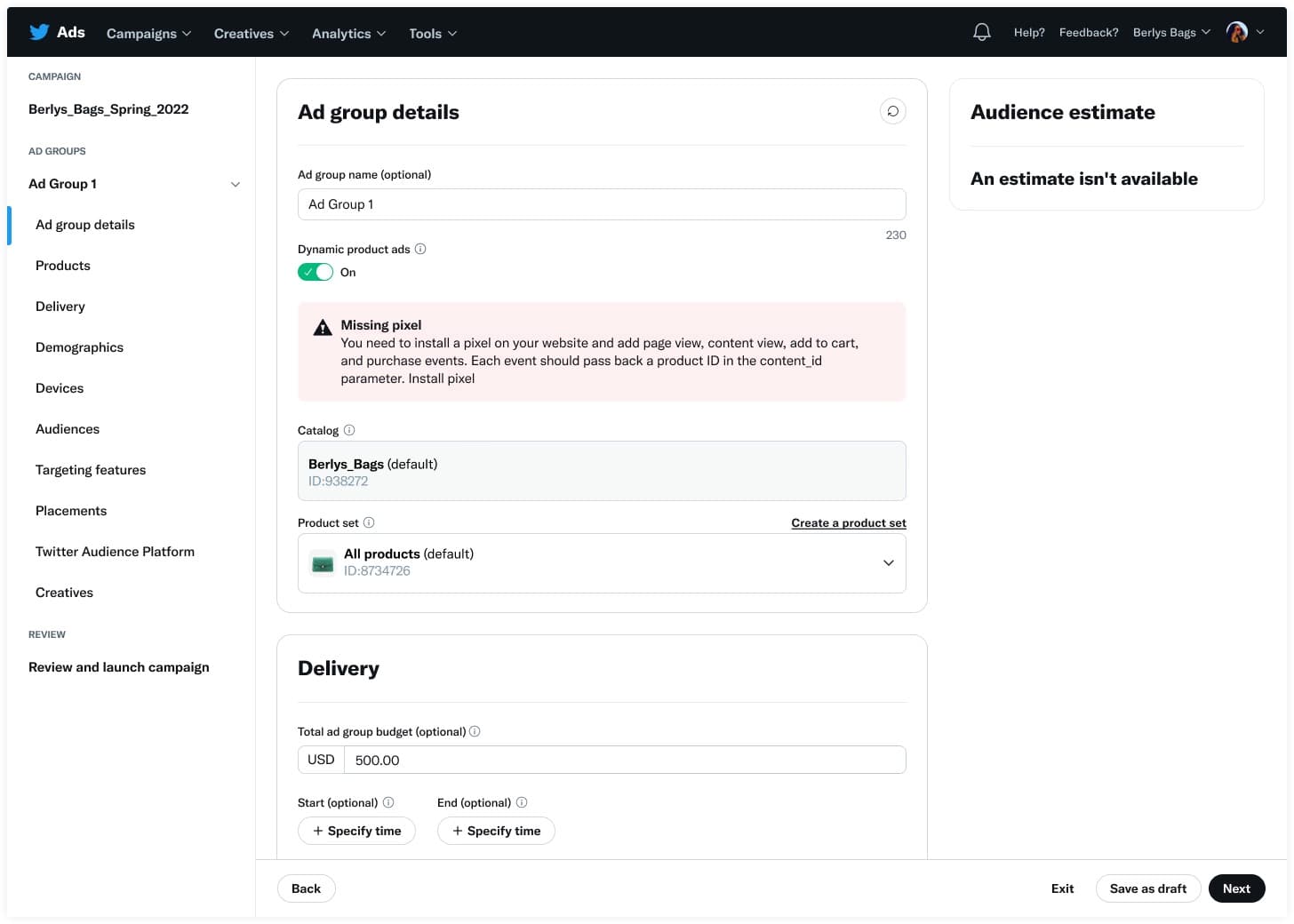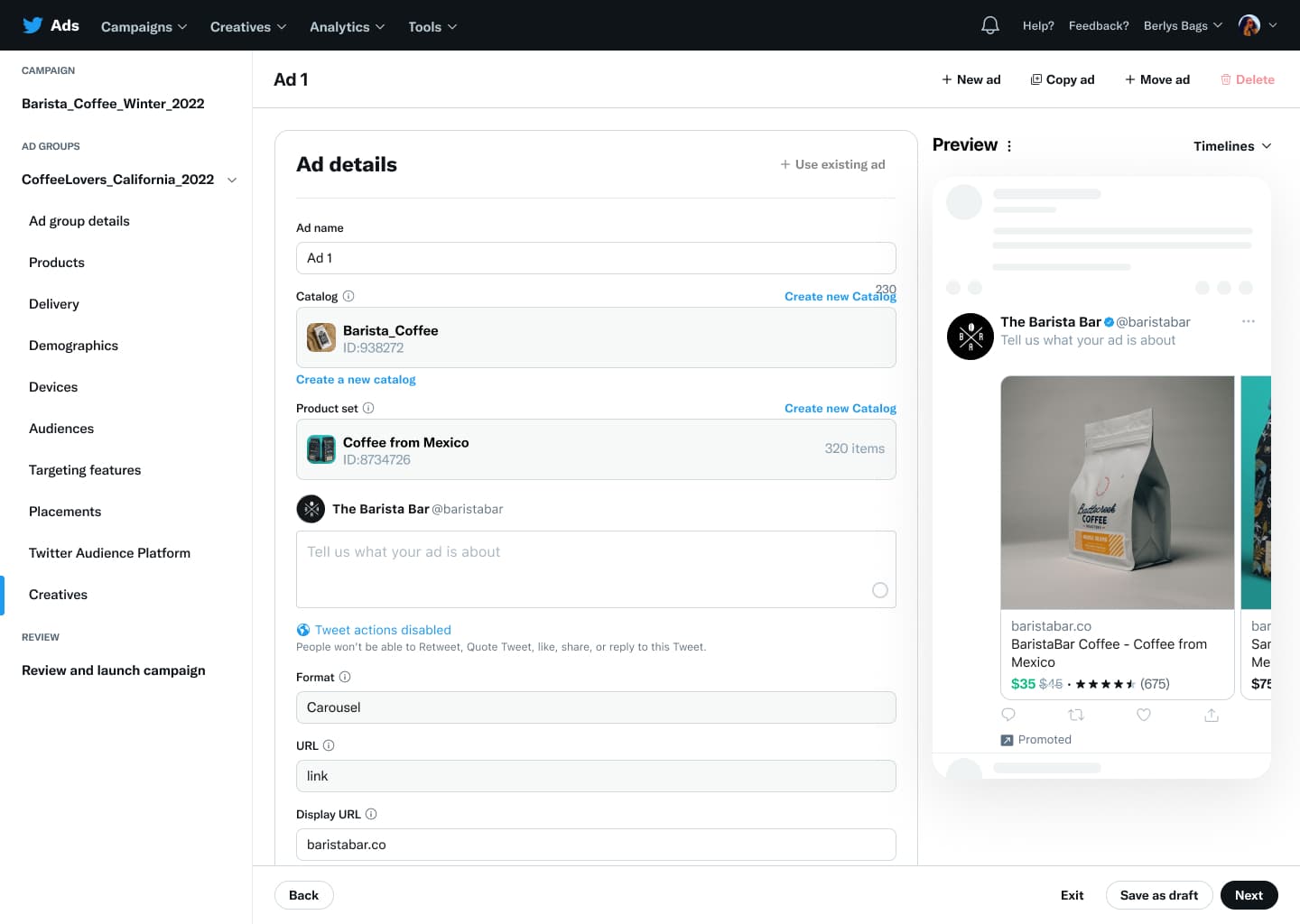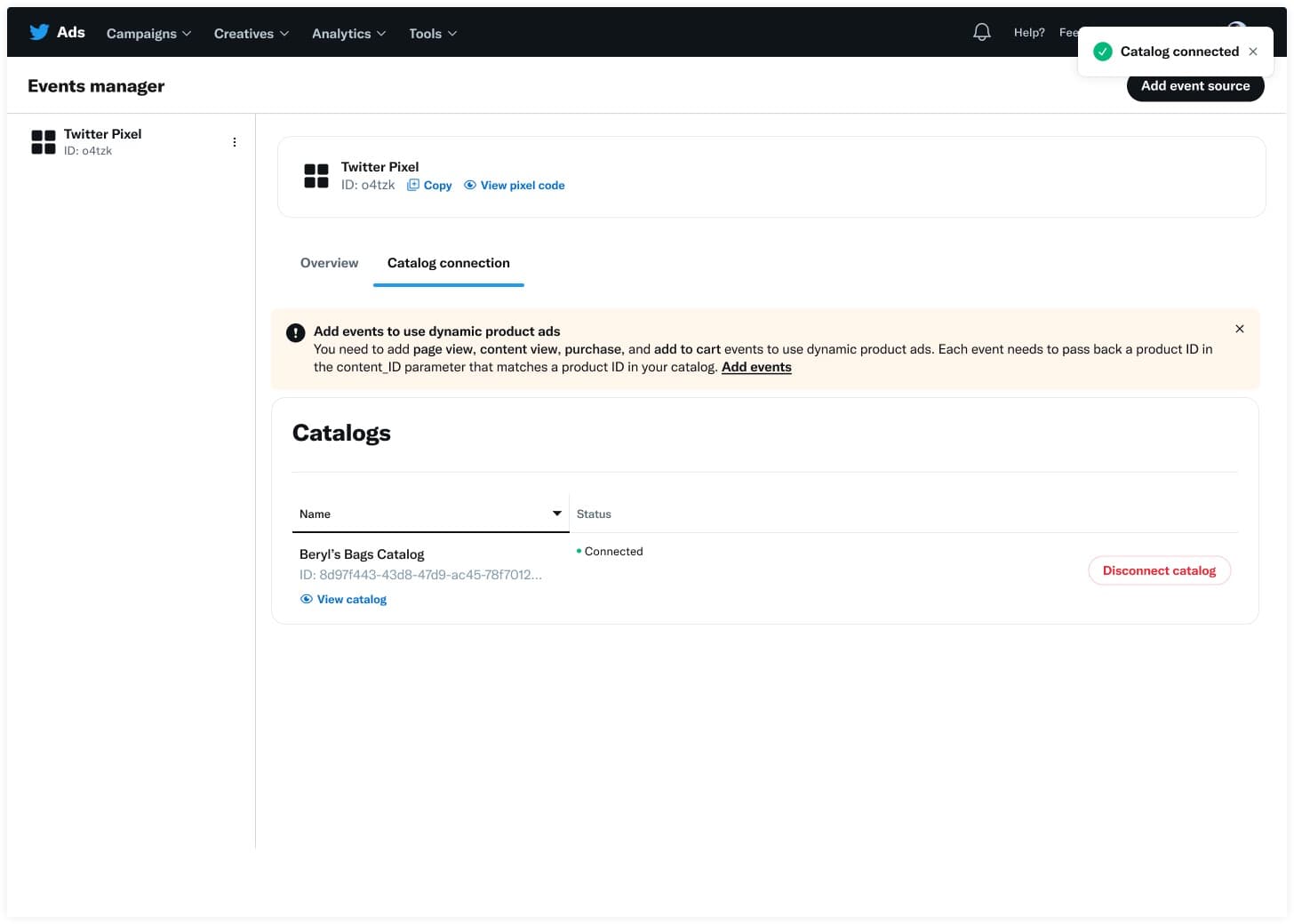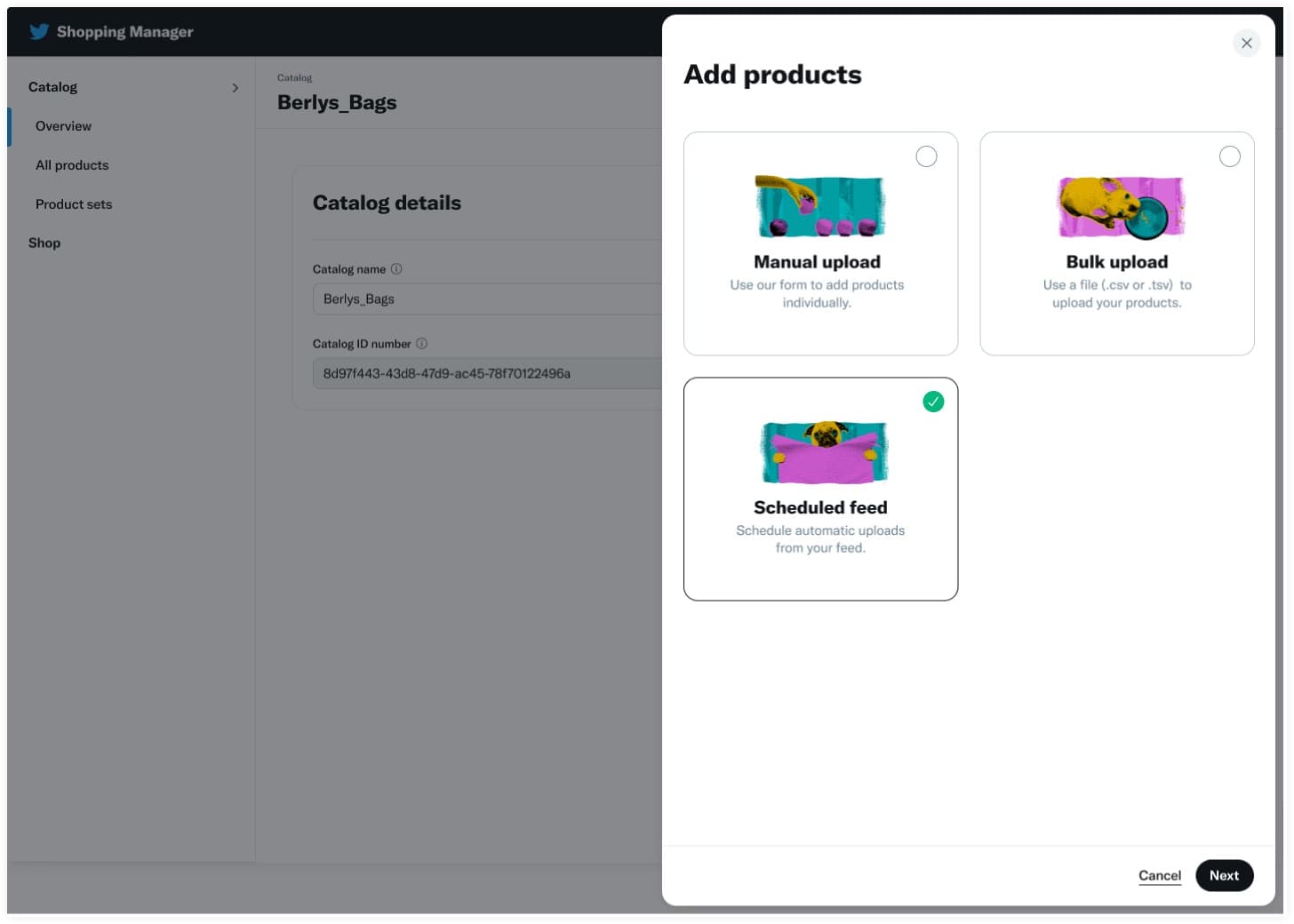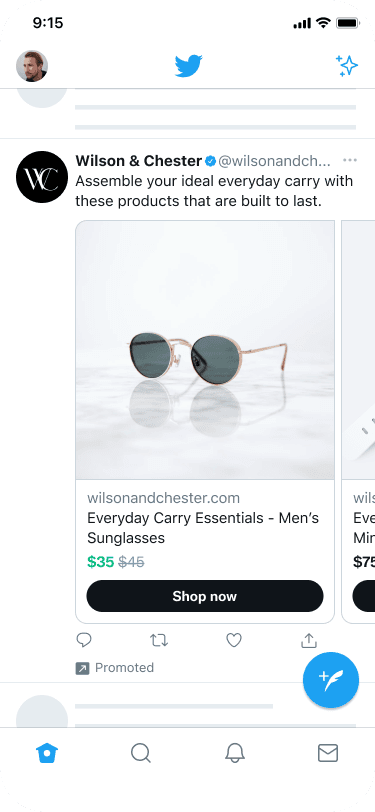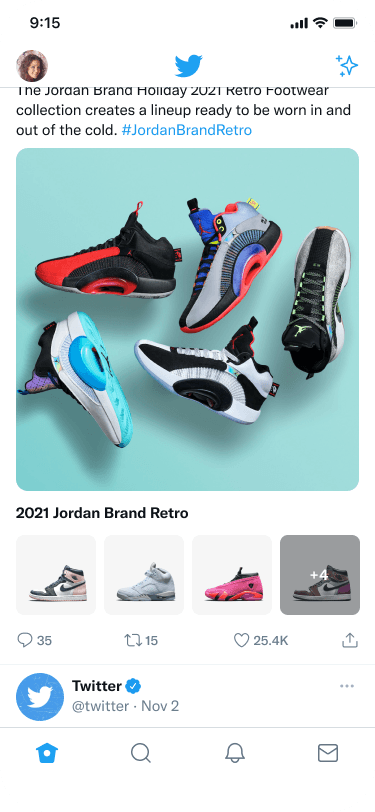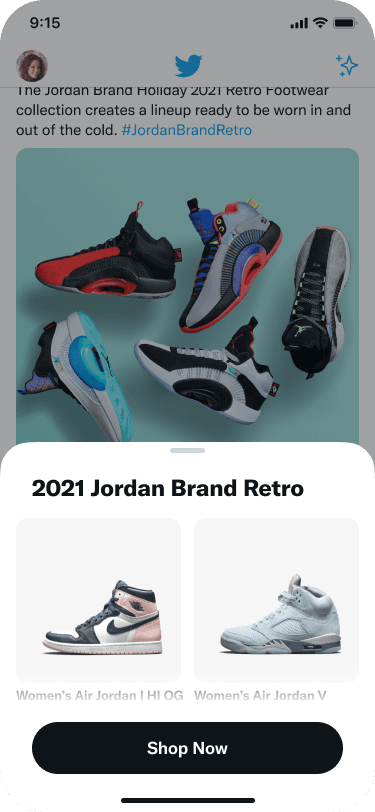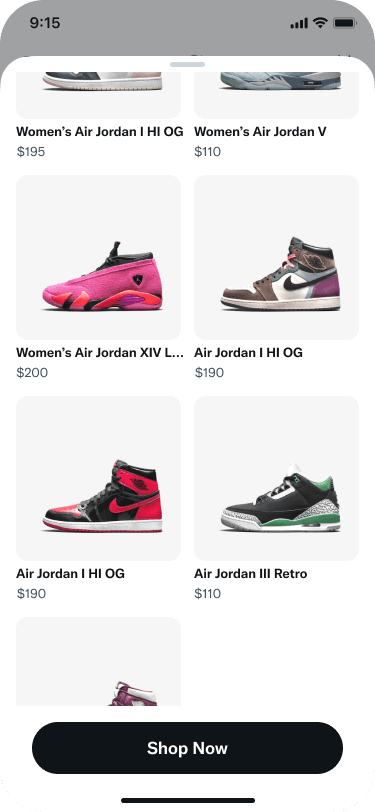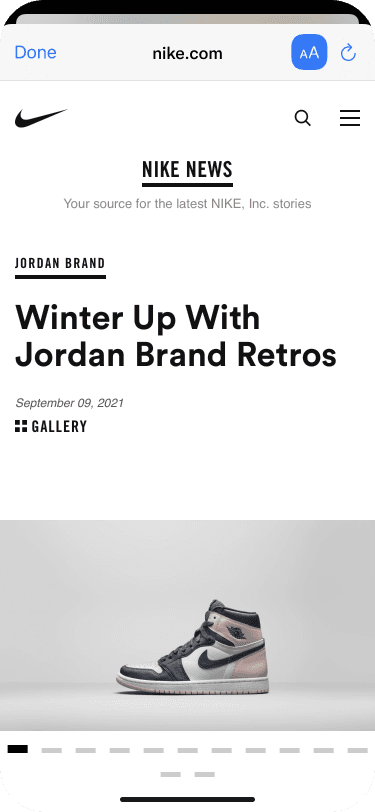Overview
Dynamic Product Ads was Twitter's biggest bet on performance advertising and commerce revenue. It finally gave retailers what they'd been asking for: a way to serve dynamically-generated ads featuring relevant products from their catalogs, targeted to customers based on past behavior and interests. It was the company's answer to Facebook's proven Dynamic Ads format—but we needed to make it unmistakably Twitter.
Leading the Advertiser Experience Design team, I drove design strategy for this complex, multi-team initiative. The challenge went beyond building new ad formats—we needed to coordinate across advertiser workflows, commerce infrastructure, product catalog systems, and measurement capabilities. And we had an immovable deadline: launch before the 2022 holiday shopping season.
Background
Between 2019 and 2022, performance advertising became Twitter's biggest revenue bet. The focus was on lower-funnel outcomes: app installs, website traffic, actual purchases. Not brand awareness or engagement metrics. Real conversion events that advertisers could measure and optimize against.
During the first years of this effort, I led the Advertiser Experience Design team as Twitter focused on increasing revenue from mobile application advertising. We delivered that revenue growth by reducing the effort required to create and manage campaigns while improving how well the ads actually performed.
I accomplished this by establishing one of my direct reports as a Design leader on the cross-functional leadership team. This designer identified and prioritized experience opportunities while helping the broader design team understand customer needs. This model of Design representation worked so well that we scaled the approach across other initiatives.
Toward the end of 2021, performance advertising priorities shifted toward improving outcomes for website advertising. We continued operating with a Senior Designer representing Design on the cross-functional leadership team. Dynamic Product Ads became one of the biggest opportunities within this strategic shift.
Challenge
Twitter faced several interconnected obstacles in bringing Dynamic Product Ads to market:
No commerce-specific ad format. Twitter didn't have a product built for retail advertisers. Facebook had Dynamic Ads. Google had Shopping Ads. We had nothing purpose-built for e-commerce.
Complex setup requirements. The product required significant technical coordination. Advertisers needed to implement website measurement through Twitter's pixel or Conversion API, import their product catalogs into Twitter's systems, and manage campaigns through what needed to be a streamlined interface.
Organizational alignment gaps. Twitter's commerce team had historically focused on organic engagement rather than advertiser needs. That created a gap that required careful cross-functional alignment. Multiple product, engineering, and design teams needed to synchronize their roadmaps.
Technical constraints. Teams needed to solve the challenge of delivering dynamic content within Tweets. Objects that had always been immutable.
Approach
I carved out dedicated time for a Senior Designer to work ahead of the formal project kickoff, establishing design as a strategic partner from the outset. This designer began with three clear goals:
Become an expert on industry practices. Perform in-depth competitive analysis to understand how advertisers create and manage Dynamic Product Ad campaigns on competitor platforms.
Map the product ecosystem. Use existing customer research, competitive analysis, and knowledge of Twitter systems to understand the various product surfaces involved in the workflow.
Create an initial vision for the advertiser experience that focused on creating a seamless workflow. One that provides guidance and minimizes errors.
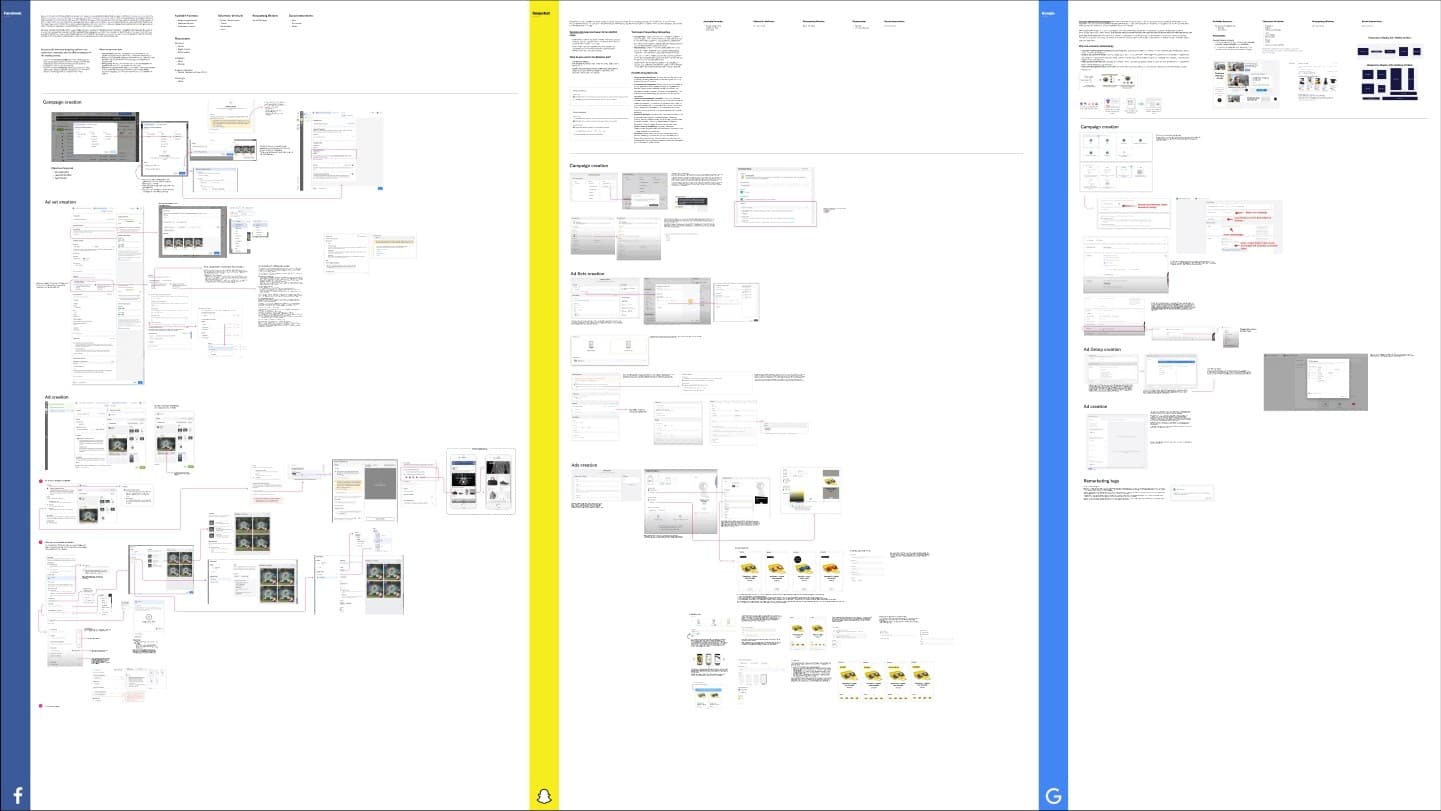
On the consumer-facing side, the design team explored modifications to Twitter's multi-destination carousel, introducing shopping-specific calls-to-action and pricing information. We also developed a Collection Ad format that provided an immersive shopping experience through increased visual prominence.
Through working ahead, partnering with Product and Engineering, and collaborating across the Design team, the Senior Designer delivered an initial end-to-end vision for the ideal customer journey. It was clear this wouldn't be the first iteration that shipped, but this vision anchored our partners on an ambitious customer-first approach. It also provided an opportunity to inform and build collaborative opportunities with the Commerce team and coordinate efforts across various segments of the Ads Design team.
Rather than allowing technical feasibility to dictate the experience, we anchored partners on an ideal customer journey and worked backward to define what the initial release could deliver.
Delivery
The designer refined the vision based on engineering investigations and near-term goals, resulting in multiple prototypes that Research presented to customers for feedback. Design and Content Design incorporated that feedback into future revisions that received additional rounds of customer assessment. The outcome was a clear direction for Twitter's Dynamic Product Ads product.
From there, Design worked with cross-functional leads to define what would be included in the initial release. Some aspects of the workflow were reduced in scope, had constraints, or needed more exploration. We broke these down into smaller projects and brought in several designers on the team to collaborate cross-functionally and deliver the necessary changes across the breadth of Twitter's advertiser-facing surfaces.
The consumer-facing ad formats introduced several innovations:
Multi-destination carousel dynamically served relevant products to potential customers at the right time, featuring shopping-specific CTAs and pricing information prominently displayed on each product card. Every detail was crafted to feel native to Twitter while serving commerce use cases: from the typography and spacing to the tap targets and transitions.
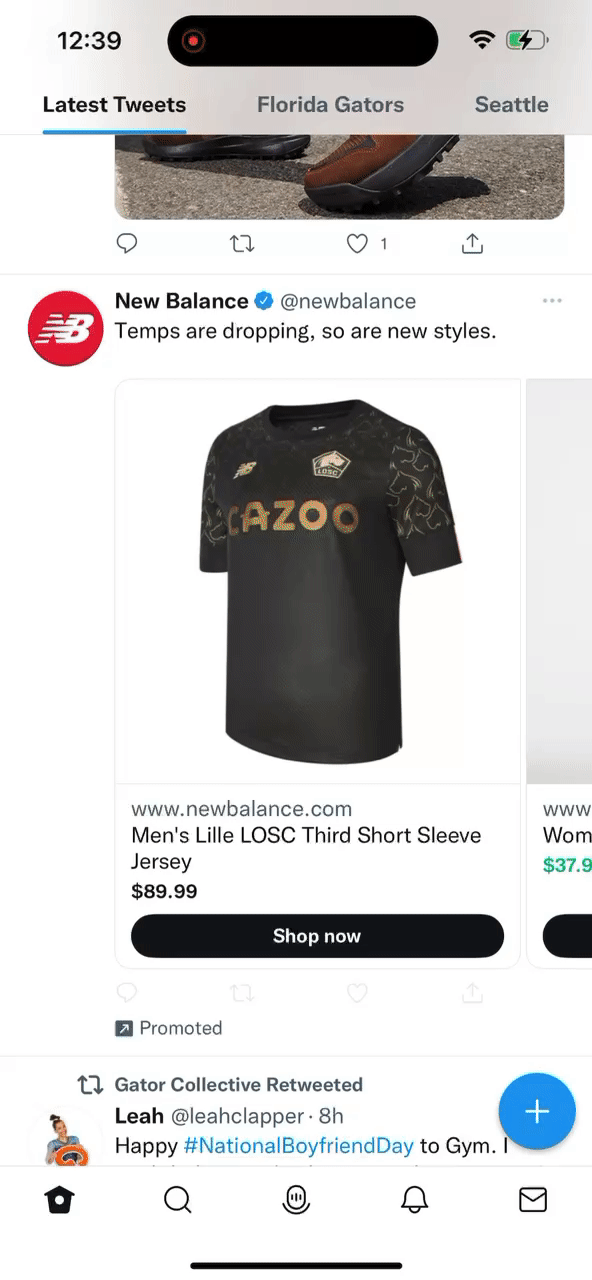
Collection Ads provided an immersive browsing experience with increased visual footprint, allowing consumers to explore multiple products without leaving Twitter.
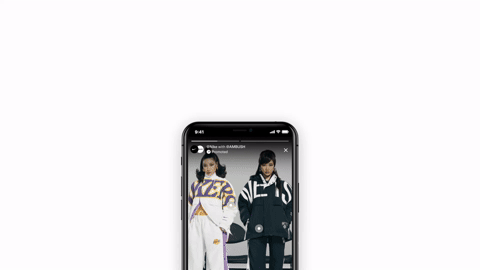
The advertiser experience prioritized guidance and error prevention:
Tailored setup workflow was activated when advertisers selected Dynamic Product Ads during ad group creation, providing extra guidance and tailoring the workflow to support the specific requirements of this campaign type.
Streamlined catalog management simplified importing and managing product catalogs within Twitter's systems.
Integrated measurement setup guided advertisers through implementing website measurement using Twitter's pixel, tag manager, or Conversion API.
Results
Dynamic Product Ads launched in beta during Q3 2022, with full availability arriving in Q4 2022 ahead of the holiday shopping season. The results demonstrated meaningful improvements over existing ad formats:
Site Visit Campaigns
Website Conversion Campaigns
Carousel Format with CTA & Pricing
Collection Ad Beta
Takeaways
We didn't get to deliver our full vision for Dynamic Product Ads, but the initiative provided valuable lessons about leading complex, multi-team product development:
Strategic planning creates strategic partnerships. Planning ahead to give the designer time to analyze research and competitive insights established Design as a subject matter expert on the cross-functional team. That elevated our influence on product direction.
Dedicated leadership with distributed execution scales impact. Dedicating a lead designer for the large project while facilitating collaboration and support allowed the project to move forward without creating bottlenecks.
Vision anchors difficult decisions. Designing and validating ideal workflows early in the product development process helped inform product requirements for the first milestone. It anchored difficult decisions in how the team took the first step toward the future state.
Collaboration multiplies capacity. Encouraging Design collaboration throughout the process enabled the broader team to break down and support multiple efforts in parallel. It provided shared knowledge that allowed the team to continue executing through organizational changes and attrition.
